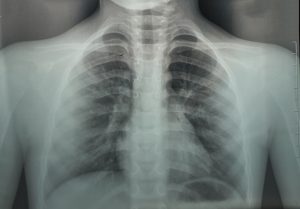
[Reprinted: HealthCareBusiness, 4-21-2020]
Performing a chest X-ray may do very little good diagnosing conditions that are the result of COVID-19, says a newly published study.
Radiologists at the Ohio State University College of Medicine assert that chest X-rays are not reliable in diagnosing respiratory infections caused by the virus, based on an analysis which found such scans to be normal for more than 50% of cases, and at most, mildly abnormal for almost 90% of patients.
“Providers ordering a chest X-ray in the outpatient setting should be aware that a patient with symptoms of COVID-19 may have a negative chest X-ray, and should manage the patient based on their symptoms,” said adjunct professor Dr. Michael Weinstock in a statement. “Doctors should not be reassured by a negative chest X-ray.”
Imaging studies around COVID-19 have primarily focused on and shown compelling results for the use of CT in identifying abnormal lung pathology in such patients. Cost and considerations such as sterilization limit the use of the modality, especially for ambulatory patients. X-ray scanners, in contrast, are less expensive and more widely available in urgent care and emergency settings, though little research has been conducted on their use in identifying COVID-19 findings.
For the current study, eleven board-certified radiologists read and re-read over 630 chest X-rays of confirmed and symptomatic COVID-19 patients from an urgent care company in New Jersey and New York. They found scans were normal in 58.3% of cases, and normal or mildly abnormal in 89% of patients.
The research, however, did show that any abnormal findings were more likely to be scattered diffusely throughout both lungs in COVID-19 patients, compared to those with bacterial pneumonia. The most common abnormal findings involved the lower lobes and appeared in an interstitial and/or multifocal pattern. Pleural effusions and lymphadenopathy were rare.
“This study reinforces what we’ve learned from our colleagues outside of the United States, that the majority of patients with COVID-19 have mild symptoms and minimal evidence of disease on chest X-ray,” said Dr. Matthew Exline, associate professor in the department of Pulmonary, Critical Care and Sleep Medicine at the Ohio State University College of Medicine, and medical director of the medical intensive care unit at the Ohio State University Wexner Medical Center, in a statement. “Hopefully this will help clinicians decide who would best benefit from hospitalization and any potential new treatments.”
A follow-up study is currently in the works to compare the outcomes of these patients to their chest X-ray results.